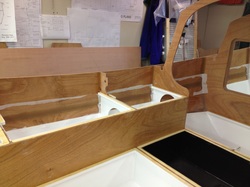
This shows peel-ply being used on the port plank 3/2 tape joint. I found that using peel-ply in this fashion results in occasional bubbles in the epoxy. I am not worrying about these much except in the cockpit, where I will fill them with fairing compound before painting.
The other thing I discovered is that, if the peel-ply fabric is delivered folded, then when you apply it to the wet fiberglass tape, it is just about impossible to get rid of the crease from the fold, resulting in a ridge in the cured epoxy, and more sanding. So, see if you can get the supplier to send it to you rolled.
The other thing I discovered is that, if the peel-ply fabric is delivered folded, then when you apply it to the wet fiberglass tape, it is just about impossible to get rid of the crease from the fold, resulting in a ridge in the cured epoxy, and more sanding. So, see if you can get the supplier to send it to you rolled.
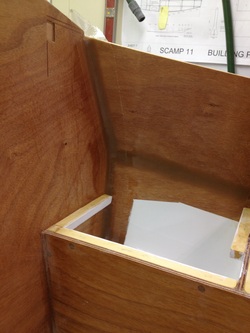
Here is the fiberglass tape after application to the plank/stern transom joint, but before application of peel-ply.
Prepping the sole and doubler by drilling screw holes. I will be using 3/4" for the sole and 1" for the doubler. I might have gone a bit overboard on sole screws - I placed one every 100mm. And I only hit one cleat screw in the process, but that one time broke my countersink bit ;( Photo at right shows the doubler (dryfit) in place, and the spot for a non-waterproof hatch cover over the sump area.
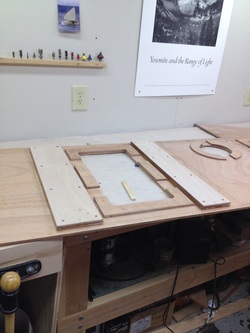
With the sole and doubler screwed down around the area of the large mid-ship hatch, I discovered that there was a bit more flex in the area next to the hatch (specifically, in the middle of the sole adjacent to the hatch) than I really wanted. If there is some flex, the hatch will probably leak. So, I thought I should beef up my sole.
Couldn't find ply scraps that were large enough, so I had to trek down to Crosscut and buy a sheet of 9mm. I would imagine that one 9mm backing piece would have been sufficient, but it would be really hard to add another once the sole is glued down, so I decided to laminate two 9mm pieces together.
These span the entire area inside the cleats, and as close to the hatch opening as I can get them, and still be able to install the hatch cover.
Couldn't find ply scraps that were large enough, so I had to trek down to Crosscut and buy a sheet of 9mm. I would imagine that one 9mm backing piece would have been sufficient, but it would be really hard to add another once the sole is glued down, so I decided to laminate two 9mm pieces together.
These span the entire area inside the cleats, and as close to the hatch opening as I can get them, and still be able to install the hatch cover.
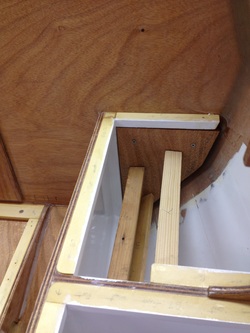
I am going to install a motor mount, for the occasional times when I want to use a motor. Thinking of maybe getting the 2.5hp Lehr, and Dick Herman gave me a lead on a removable motor mount - Trac T10050 and T10053 adapter plate.
So, here is the underseat motor mount doubler - two pieces of 9mm ply (the building manual calls for an 18mm doubler).
So, here is the underseat motor mount doubler - two pieces of 9mm ply (the building manual calls for an 18mm doubler).
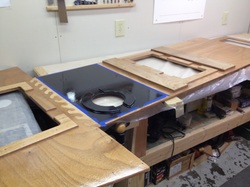
Sole almost ready to install - 2nd and 3rd coats of epoxy have been applied on the underside, and I put an additional 2 coats of epoxy with graphite powder on the area over the ballast tank - I held it back about 1/4" from where the cleats contact the sole, so that the graphite won't interfere with adhesion to the cleats (I plan to use 5200 around the ballast tank).
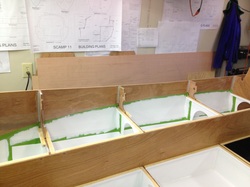
And lastly, finishing painting of the storage areas - areas that had to wait for the 3rd planks.
Isn't it interesting how the straight line marked on the planks, along the back of the seat tops, looks curved. Yeah, I know why - I just think its kinda cool.
Isn't it interesting how the straight line marked on the planks, along the back of the seat tops, looks curved. Yeah, I know why - I just think its kinda cool.
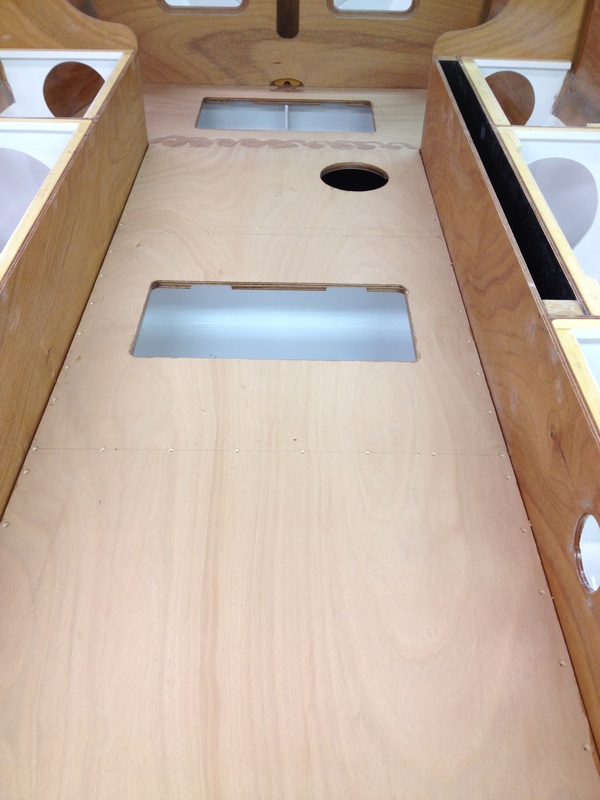
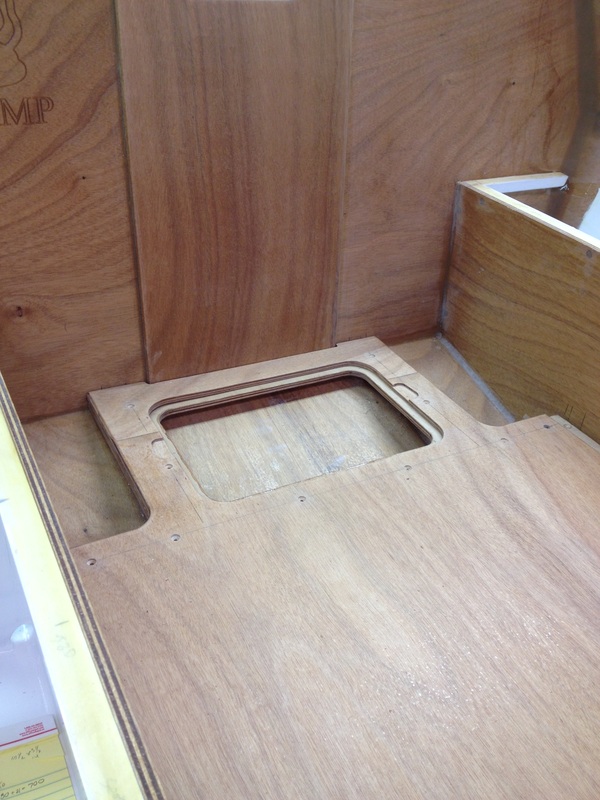
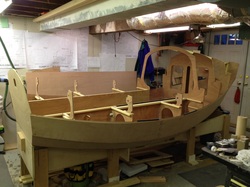
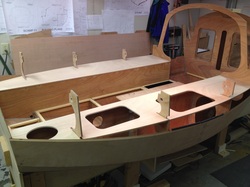
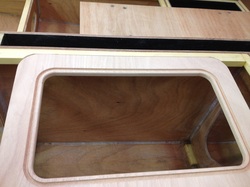
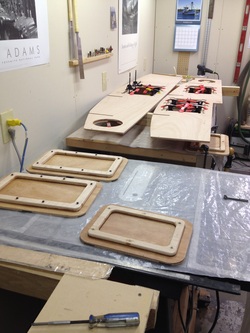
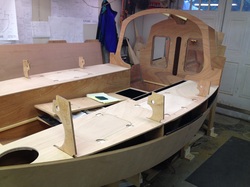
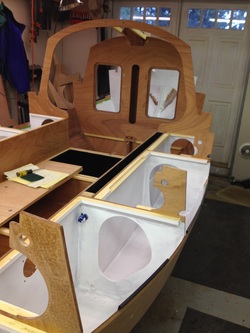
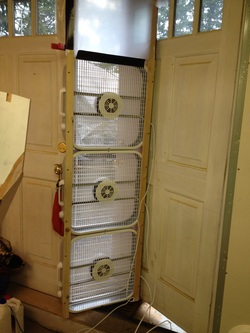
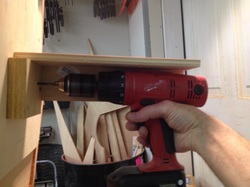
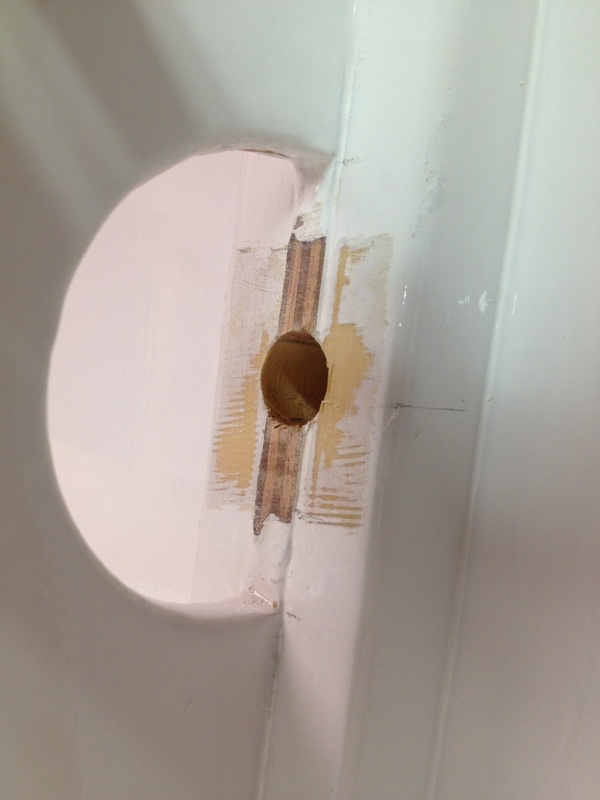

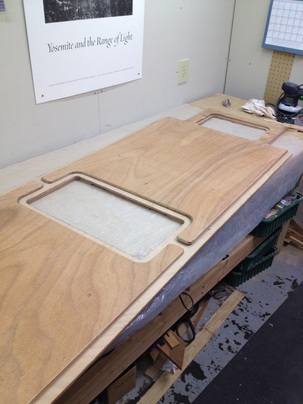
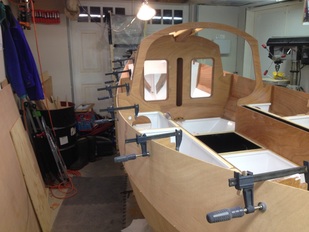
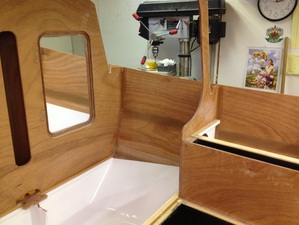
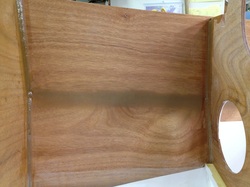
 RSS Feed
RSS Feed
